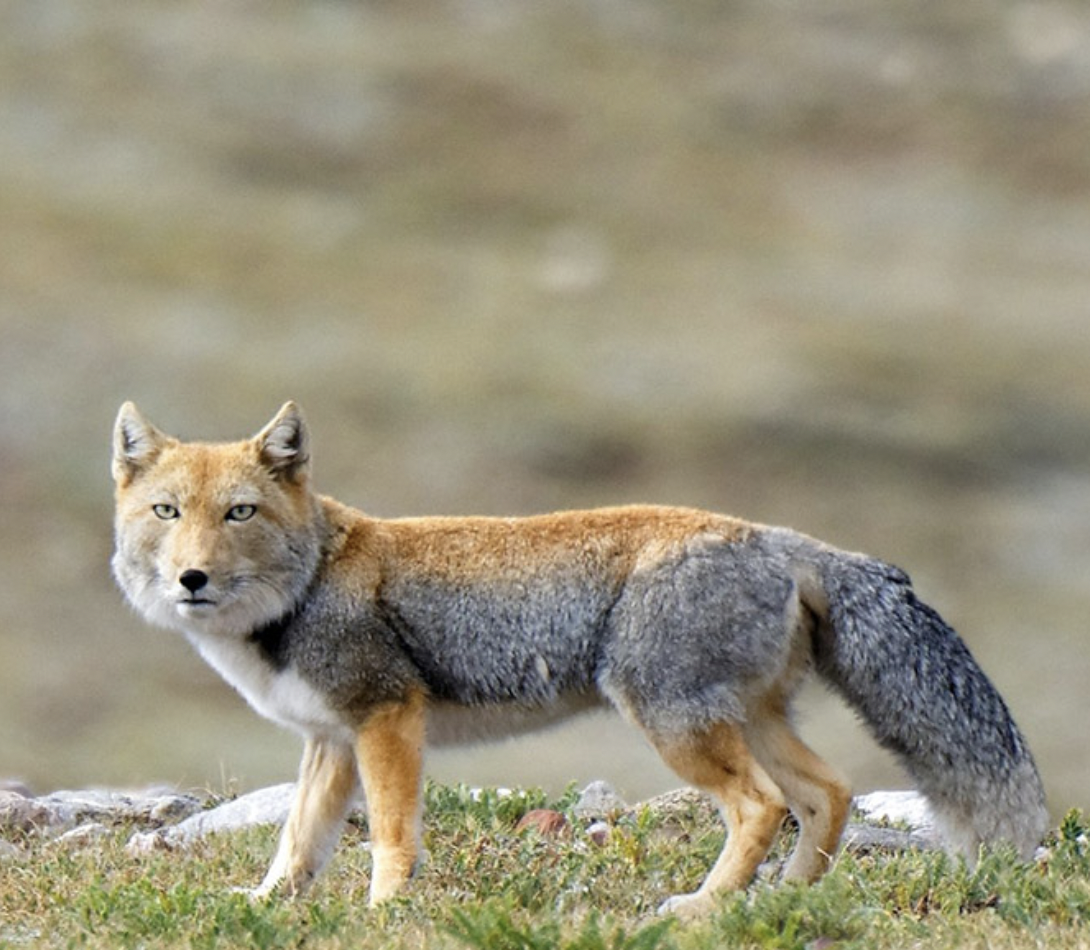Tibetan Fox - A Unique Plateau Dweller
The Tibetan fox, a creature that calls the high places of Central Asia home, is, you know, a truly fascinating animal. This particular type of fox, often called the Tibetan sand fox, makes its living on the vast plateaus and mountain areas, a place sometimes given the name “the roof of the world.” It is a part of a much larger natural setting, stretching across a big portion of the western reaches of East Asia, a very unique part of our planet.
This animal, with its rather distinctive appearance, is, like, perfectly suited to the tough conditions of its elevated surroundings. It possesses certain physical traits that help it get by in these wide-open spaces. We will, in a way, explore what makes this animal so special, from its particular look to how it goes about its daily existence in such a demanding environment.
So, we are going to take a closer look at this interesting animal, covering its usual name, where it lives, and what it looks like. We will also get into some of its habits and, you know, how it relates to the land and the people who also call Tibet home. This creature, after all, is quite a symbol of the wild, untamed beauty of the Tibetan plateau, and we will try to paint a picture of its life.
Table of Contents
- What Makes the Tibetan Fox So Special?
- Where Does the Tibetan Fox Make Its Home?
- How Does the Tibetan Fox Live Its Life?
- Are There Stories About the Tibetan Fox?
- A Look at the Tibetan Plateau
What Makes the Tibetan Fox So Special?
The Tibetan fox, or *Vulpes ferrilata* as it is known in scientific circles, stands out quite a bit from other fox kinds. It is, like, a species that really has its own particular set of traits, especially when you consider its appearance. This animal has, you know, a look that is quite memorable, setting it apart from its relatives in the fox family. It is not just another creature; it is a very specific type of fox, adapted to a very specific kind of place, which makes it, you know, rather unique in its own right.
The Distinctive Appearance of the Tibetan Fox
When you see a Tibetan fox, one of the first things you might notice is its rather distinctive head shape. It is, in a way, often described as having a broad, somewhat square-looking face, which is quite different from the more pointed faces of many other fox types. Its snout, for example, is, you know, relatively shorter than what you might typically see on other foxes. This gives the animal a very particular kind of expression, especially when combined with its eyes.
The eyes of the Tibetan fox are, like, often described as yellow and appearing somewhat narrowed, which can give the animal a rather serious or, you know, perhaps even a bit of a quizzical look. This feature, combined with its generally blocky head, contributes to its immediately recognizable appearance. Its fur, too, is quite interesting; it has a covering of fur that feels gentle and thick, which is, you know, probably very helpful for staying warm in the cold mountain air. The coloring of its fur is also worth mentioning, as a matter of fact.
Its face, the top of its head, its neck, its back, and the lower parts of its legs usually have a color that is, you know, somewhere between a tan and a reddish-brown. This coloration helps it blend in with the rocky and grassy surroundings of its home. The sides of its body, near its belly, are, like, often a lighter shade, which creates a bit of a contrast. And then there is its tail, which is, you know, quite full and bushy, adding to its overall distinct shape. Compared to something like the fennec fox, which is, you know, the smallest type of fox, the Tibetan fox is a bit more substantial in size, though it is still considered a small fox species overall.
Life Patterns of the Tibetan Fox
The way the Tibetan fox lives its life is, you know, quite interesting, especially when it comes to how it interacts with others of its kind. These animals are, you know, considered to be very social and also quite clever. One remarkable thing about them is that they tend to form a partnership with one other fox and stay with that partner for their whole life, right until one of them passes away. This kind of lasting connection is, you know, rather unusual in the animal kingdom and speaks to their social nature.
We also know a little bit about their family life, specifically about the young ones. Pictures have shown Tibetan fox young playing together, which, you know, suggests a playful side to these creatures. It is believed that the period from when a female fox becomes pregnant to when she gives birth is, like, somewhere around 50 to 60 days. This gives us, you know, a small peek into their reproductive cycle. There is, apparently, even a famous picture of a Tibetan fox that looks as if it is, you know, smiling or "laughing," which just adds to the charm and intrigue surrounding these animals.
Where Does the Tibetan Fox Make Its Home?
The Tibetan fox is, you know, truly a creature of the high altitudes, making its home in some of the world's most elevated and expansive areas. This animal is, like, found primarily on the Tibetan Plateau and the regions that surround it. This includes parts of Nepal, China, Sikkim, and Bhutan, reaching, you know, very high places, sometimes as high as about 5,300 meters, which is quite a climb. So, it is really an animal that thrives in thin air and open spaces, which is, you know, pretty remarkable.
The Sweeping Vistas of the Tibetan Fox Habitat
The Tibetan Plateau itself is, you know, a vast area of flatlands and mountains in the central part of Asia. It is often called “the roof of the world” because of its incredible elevation. This region, which is, you know, more or less Tibet or greater Tibet, covers a very large part of the western side of East Asia. The Tibetan fox, in particular, is known for living in both the flat, open plains and the more rugged, mountainous parts of this grand landscape, which, you know, shows its adaptability.
The historical reach of the Tibetan empire, for example, during King Trisong Detsen's rule, extended over truly large areas of land. Its borders, you know, touched Central Asia and Afghanistan in the west and Bangladesh in the south. This gives you, like, a sense of the sheer scale of the region where the Tibetan fox lives. It is a place of, you know, immense natural beauty and, too, quite a bit of solitude, perfectly suited for an animal that needs wide-open spaces to roam and find its sustenance.
How Does the Tibetan Fox Live Its Life?
The daily existence of a Tibetan fox, you know, is very much shaped by the environment it lives in. These animals spend their days searching for food across the vast open areas of the plateau. Their unique physical traits, like their dense fur, help them endure the often-harsh weather conditions found at such high elevations. They are, apparently, quite good at blending into their surroundings, using their coloration to remain unnoticed by both their prey and, you know, any potential dangers.
Their behavior, especially how they interact with each other, is, like, a key part of their survival strategy. The fact that they form such strong, lasting bonds with a single partner suggests a certain level of cooperation and mutual support in their lives. This kind of social structure is, you know, pretty important for raising their young and, too, for surviving in a challenging habitat. They are, in a way, a testament to how animals adapt and find ways to thrive even in tough places.
Social Connections of the Tibetan Fox
As mentioned, the Tibetan fox is, you know, known for being incredibly social and quite intelligent. This intelligence is, like, probably very helpful for finding food and avoiding trouble in their expansive home. The bond they form with their partner is, you know, a really significant part of their social life. It suggests that they are not just solitary hunters but creatures that rely on companionship and shared effort, at least within their immediate family unit. This might be, you know, a way for them to increase their chances of successful breeding and raising their young, which is, you know, rather crucial for any species.
We see hints of this social nature in the observation of Tibetan fox young playing together. Such play is, you know, typically a very important part of learning and development for many animal species, helping the young ones to practice skills they will need later in life. It is, you know, a clear sign of family interaction and, too, a glimpse into the more playful side of these otherwise somewhat mysterious creatures. The general understanding is that these animals, you know, maintain a strong family unit, which helps them survive and pass on their traits.
Are There Stories About the Tibetan Fox?
Animals that live in remote and striking places, you know, often find their way into the local tales and beliefs of the people who share their land. The Tibetan fox is, like, no exception. Given its unique appearance and its presence in such a culturally rich area, it is, you know, only natural that stories and legends might grow up around it. These tales, in a way, reflect how people view and understand the animals that live alongside them, often giving them special meanings or characteristics, which is, you know, pretty common across many cultures.
Legends and the Tibetan Fox
While specific details about Tibetan fox legends are, you know, sometimes hard to come by in general information, the mention of "Tibetan sand fox and local legends" in our source text suggests that these animals do indeed hold a place in the oral traditions and folklore of the Tibetan people. It is, like, very common for creatures with such distinctive features or behaviors to become figures in stories, perhaps representing cleverness, adaptability, or even, you know, a connection to the spiritual side of the world. For example, in a fictional setting, a Tibetan fox character, like "Ai" from Beastars, is, you know, depicted as having facial muscles that do not show emotions, which, in a way, adds to its mystique and perhaps mirrors some perception of the real animal's appearance.
The high value that Tibetan people place on preserving their local traditions is, you know, a big part of what makes visiting Tibet such a unique experience. This includes, you know, their language, their writing, their intricate clothing, their hearty food, and their spiritual buildings. It is, like, very likely that the stories about the Tibetan fox are woven into this rich cultural fabric, passed down through generations. These legends would, you know, offer a glimpse into the relationship between the people and the wildlife of the plateau, showing how deeply intertwined they are, which is, you know, quite beautiful.
A Look at the Tibetan Plateau
To truly appreciate the Tibetan fox, it is, you know, helpful to understand the place it calls home. Tibet, a historical region and, too, an autonomous region of China, is, you know, often referred to as “the roof of the world” for very good reason. It takes up a truly vast area of high flatlands and mountains in the central part of Asia. This environment is, like, very challenging, with thin air and often extreme weather, yet it supports a surprising variety of life, including the resilient Tibetan fox.
The total number of Tibetan people in the world is, you know, about 6.5 million. They have, like, a very rich culture, with its own unique language, traditions, and ways of life. The information we have, you know, touches on the foundational parts of Tibetan culture, from its distinct language and writing to its detailed clothing, filling food, and spiritual buildings. This cultural richness is, you know, deeply connected to the land, and the animals, like the Tibetan fox, are an integral part of this heritage. It is, you know, a place where nature and human life are very much intertwined.

112 Tibetan fox Images, Stock Photos & Vectors | Shutterstock

Tibetan Fox Blank Template - Imgflip

Tibetan Fox - SAFE Worldwide